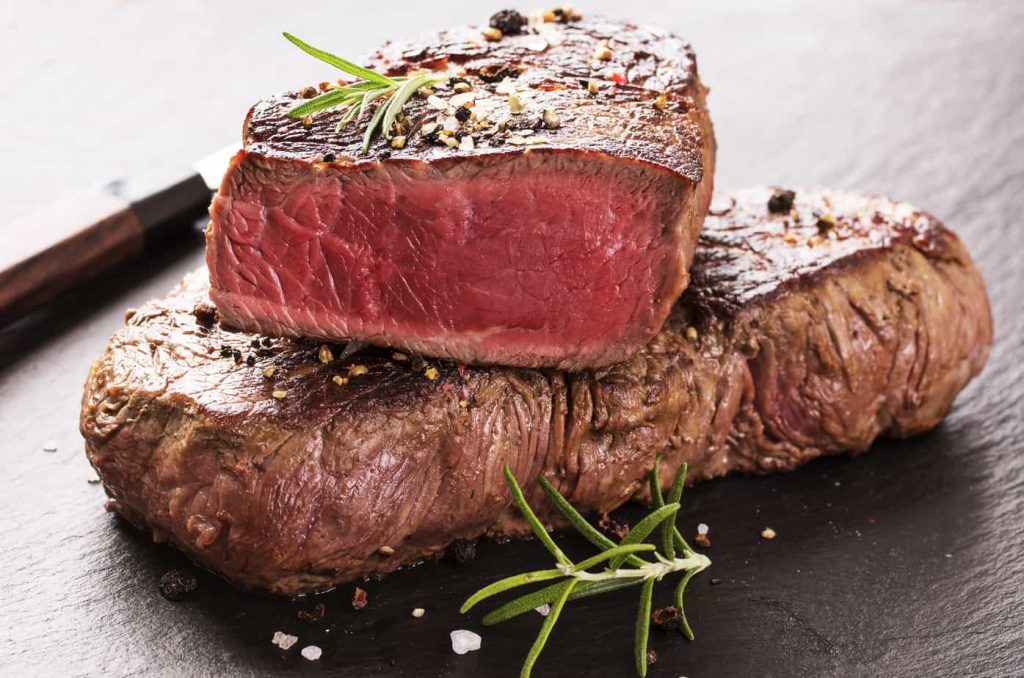Cooking a steak at home is uncommon for most people; we leave the hustle to professionals to do it for us. However, did you know that making restaurant-quality steak is achievable even without a cookery course? You don’t have to be a chef to do it!
These expert tips and tricks will walk you through every step of the process, transforming you into a steak grilling guru in no time.
1. Pick the right cut
There are many steak cuts in steakhouses. They include ribeye, New York Strip, filet, and sirloin. Some are bone-in, and others are boneless. Go for ribeye if you want a super tender, juicy, and flavorful steak.
However, let your wallet guide you because some steak cuts are more expensive than others. Give your personal preference a chance to guide you. Read content about the different steak cuts and choose the one you prefer best. If you don’t have time for that, seek assistance from your butcher.
2. Pick the Fat or Oil Carefully
Some people prefer extra virgin olive oil, while others swear by butter or lard. I prefer virgin olive oil because it has more nutritional benefits than saturated fats. But, all these oils will provide an excellent outcome for your perfect steak.
3. Dry Your Steak Cut with Some Tissue Paper before Cooking
Dry steak forms a fantastic crust and does not have the appalling boiled meat flavor. So, pat your steak dry with tissue paper or a clean cotton kitchen towel before cooking. Season it generously seconds before placing it on the pan. If you season it long before putting it on the pan, the salt may drain out the steak moisture, and you’ll be left with hard-to-chew meat.
4. Season Generously
I can’t emphasize this point enough! But if you’ve ever tasted salt- less meat, you’ll understand why I have mentioned it far too many times. Season it insensibly before putting it on the pan. Sprinkle it with lots of salt, pepper, garlic, and any other spices you prefer. I don’t mean you overdo it. Use your intuition to know what amount is enough.
5. Heat the Pan (But don’t overheat it)
But it all goes back to the steak cut type. For instance, if you’re cooking ribeye, heat the pan hot because this type has a considerable amount of fat. The filet will require moderate heat, while the T-bone will need a hot pan. You must understand your steak type before cooking. But if you don’t know, seek help from your butcher when buying it.
6. Add Extra Flavor like Onions, Garlic and Butter
Some steak cuts like ribeye have a natural flavor. So you don’t have to add many others. But steaks such as sirloin will need your help when it comes to flavor. Season them with extras to make them flavorful. As you can see, everything goes around understanding your steak cut type. So before you get out of your steakhouse, seek the butcher’s help on that.
7. First Double-Heat the Steak
The lovely brown crust on a cooked steak is its beauty, yet it demands a high temperature to develop. As a result, it’s critical to start cooking the meat at a high temperature. Reduce the heat to a moderate setting and allow the steak to simmer gently after the brown crust has developed. The interior will not be overcooked, and the outside will not be scorched at this temperature.
8. Don’t Flip It Many Times.
Give your steak enough time to sear before turning it. It will help form a delicious brown crust, and the seasoning will spread to the meat’s interior. The meat will harden up as it gets ready.
9. Remove it From the Pan.
Once ready, put the heat off. With the help of your pair of tongs, remove it from the pan and let it rest on your chopping board. Rub it with some butter or olive oil to make it incredibly juicy. If it’s low in natural flavors, then you can rub it with your chosen herbs, most preferably garlic and pepper. Sprinkle a small amount of salt to increase its flavor.
With these few helpful tips and tricks for making a perfect steak, you can never go wrong. Trial makes perfect. So, make cooking a perfect steak at home your hobby and you’ll discover more tricks of the game.



